The Story of the Malakand Field Force by Winston S. Churchill (guided reading books txt) 📕
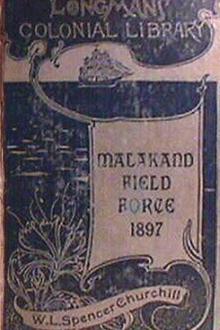
- Author: Winston S. Churchill
- Performer: -
Book online «The Story of the Malakand Field Force by Winston S. Churchill (guided reading books txt) 📕». Author Winston S. Churchill
Followers … . . 1 2
Total, all ranks—20
This was the loss; but every man in the fort had held death at arm’s length, for seven nights, and seven days.
It is a significant fact, that, though the cavalry horses were exposed to the enemy’s fire the whole time, hardly any were killed or wounded.
The tribesmen, feeling sure that the place was theirs, and hoping that these fine beasts would fall unto their hands alive, had abstained from shooting them.
As far as could be ascertained by careful official inquiries the enemy lost over 2000 men in the attack upon Chakdara.
[The following statistics as to the expenditure of ammunition may be of interest:—
Rounds.
28th July. Maxim … … 843
” Martini-Henry … 7170
29th July. Maxim … … 667
” Martini-Henry … 4020
30th July. Maxim … … 1200
” Martini-Henry … 5530
31st July. Maxim … … 180
” Martini-Henry … 2700
This is approximately twenty rounds per man per diem. The fire control must have been excellent.]
The Malakand Pass gives access to the valley of the Swat, a long and wide trough running east and west, among the mountains. Six miles further to the east, at Chakdara, the valley bifurcates. One branch runs northward towards Uch, and, turning again to the west, ultimately leads to the Panjkora River and beyond to the great valley of Nawagai. For some distance along this branch lies the road to Chitral, and along it the Malakand Field Force will presently advance against the Mohmands.
The other branch prolongs the valley to the eastward. A few miles beyond Chakdara a long spur, jutting from the southern mountains, blocks the valley. Round its base the river has cut a channel. The road passes along a narrow stone causeway between the river and the spur. Here is the Landakai position, or as the tribesmen have for centuries called it, the “Gate of Swat.” Beyond this gate is Upper Swat, the ancient, beautiful and mysterious “Udyana.” This chapter will describe the forcing of the gate and the expedition to the head of the valley.
The severe fighting at the Malakand and Chakdara had shown how formidable was the combination, which had been raised against the British among the hill tribes. The most distant and solitary valleys, the most remote villages, had sent their armed men to join in the destruction of the infidels. All the Banjaur tribes had been well represented in the enemy’s ranks. The Bunerwals and the Utman Khels had risen to a man. All Swat had been involved. Instead of the two or three thousand men that had been estimated as the extreme number, who would follow the Mad Fakir, it was now known that over 12,000 were in arms. In consequence of the serious aspect which the military and political situation had assumed, it was decided to mobilise a 3rd and Reserve Brigade composed as follows:—
3rd Brigade.
Commanding—Brigadier-General J.H. Wodehouse, C.B., C.M.G.
2nd Battalion Highland Light Infantry.
1st ” Gordon Highlanders.
21st Punjaub Infantry.
2nd Battalion 1st Gurkhas.
No. 3 Company Bombay Sappers and Miners.
” 14 British Field Hospital.
” 45 Native ” “
” 1 Field Medical Depot.
The fighting of the preceding fortnight had left significant and terrible marks on the once smiling landscape. The rice crops were trampled down in all directions. The ruins of the villages which had been burned looked from a distance like blots of ink. The fearful losses which the enemy had sustained, had made an appreciable diminution, not of an army, but of a population. In the attacks upon the Malakand position, about 700 tribesmen had perished. In the siege of Chakdara, where the open ground had afforded opportunity to the modern weapons and Maxim guns, over 2000 had been killed and wounded. Many others had fallen in the relief of Chakdara and in the cavalry pursuit. For days their bodies lay scattered about the country. In the standing crops, in the ruins of villages, and among the rocks, festering bodies lay in the blazing sun, filling the valley with a dreadful smell. To devour these great numbers of vultures quickly assembled and disputed the abundant prey with the odious lizards, which I have mentioned in an earlier chapter, and which emerged from holes and corners to attack the corpses.
Although every consideration of decency and health stimulated the energy of the victors in interring the bodies of their enemies, it was some days before this task could be accomplished, and even then, in out-of-the-way places, there remained a good many that had escaped the burying parties.
Meanwhile the punishment that the tribesmen of the Swat Valley had received, and their heavy losses, had broken the spirit of many, and several deputations came to make their submission. The Lower Swatis surrendered unconditionally, and were allowed to return to their villages. Of this permission they at once availed themselves, and their figures could be seen moving about their ruined homes and endeavouring to repair the damage. Others sat by the roadside and watched in sullen despair the steady accumulation of troops in their valley, which had been the only result of their appeal to arms.
It is no exaggeration to say, that perhaps half the tribesmen who attacked the Malakand, had thought that the soldiers there, were the only troops that the Sirkar [The Government] possessed. “Kill these,”
they said, “and all is done.” What did they know of the distant regiments which the telegraph wires were drawing, from far down in the south of India? Little did they realise they had set the world humming; that military officers were hurrying 7000 miles by sea and land from England, to the camps among the mountains; that long trains were carrying ammunition, material and supplies from distant depots to the front; that astute financiers were considering in what degree their action had affected the ratio between silver and gold, or that sharp politicians were wondering how the outbreak in Swat might be made to influence the impending bye-elections. These ignorant tribesmen had no conception of the sensitiveness of modern civilisation, which thrills and quivers in every part of its vast and complex system at the slightest touch.
They only saw the forts and camps on the Malakand Pass and the swinging bridge across the river.
While the people of Lower Swat, deserted by the Mad Mullah, and confronted with the two brigades, were completely humbled and subdued, the Upper Swatis, encouraged by their priests, and, as they believed, safe behind their “gate,” assumed a much more independent air. They sent to inquire what terms the Government would offer, and said they would consider the matter. Their contumacious attitude, induced the political officers to recommend the movement of troops through their country, to impress them with the determination and power of the Sirkar.
The expedition into the Upper Swat Valley was accordingly sanctioned, and Sir Bindon Blood began making the necessary preparations for the advance. The prospects of further fighting were eagerly welcomed by the troops, and especially by those who had arrived too late for the relief of Chakdara, and had had thus far, only long and dusty marches to perform. There was much speculation and excitement as to what units would be selected, every one asserting that his regiment was sure to go; that it was their turn; and that if they were not taken it would be a great shame.
Sir Bindon Blood had however already decided. He had concentrated a considerable force at Amandara in view of a possible advance, and as soon as the movement was sanctioned organised the column as follows:—
1st Brigade.
Commanding—Brigadier-General Meiklejohn.
Royal West Kent Regiment.
24th Punjaub Infantry.
31st ” “
45th Sikhs
With the following divisional troops:-
10th Field Battery.
No.7 British Mountain Battery.
” 8 Bengal ” “
” 5 Company Madras Sappers and Miners.
2 Squadrons Guides Cavalry.
4 ” 11th Bengal Lancers.
This force amounted to an available fighting strength of 3500 rifles and sabres, with eighteen guns. Supplies for twelve days were carried, and the troops proceeded on “the 80 lb. scale” of baggage, which means, that they did not take tents, and a few other comforts and conveniences.
Before the force started, a sad event occurred. On the 12th of August, Lieut.-Colonel J. Lamb, who had been wounded on the night of the 26th of July, died. An early amputation might have saved his life; but this was postponed in the expectation that the Rontgen Rays would enable the bullet to be extracted. The Rays arrived from India after some delay.
When they reached Malakand, the experiment was at once made. It was found, however, that the apparatus had been damaged in coming up, and no result was obtained. Meanwhile mortification had set in, and the gallant soldier died on the Sunday, from the effects of an amputation which he was then too weak to stand. His thigh bone had been completely shattered by the bullet. He had seen service in Afghanistan and the Zhob Valley and had been twice mentioned in despatches.
On the 14th Sir Bindon Blood joined the special force, and moved it on the 16th to Thana, a few miles further up the valley. At the same time he ordered Brigadier-General Wodehouse to detach a small column in the direction of the southern passes of Buner. The Highland Light Infantry, No.3 Company Bombay Sappers and Miners, and one squadron of the 10th Bengal Lancers accordingly marched from Mardan, where the 3rd Brigade then was, to Rustum. By this move they threatened the Bunerwals and distracted their attention from the Upper Swat Valley. Having thus weakened the enemy, Sir Bindon Blood proceeded to force the “Gate of Swat.”
On the evening of the 16th, a reconnaissance by the 11th Bengal Lancers, under Major Beatson, revealed the fact, that the Landakai position was strongly held by the enemy. Many standards were displayed, and on the approach of the cavalry, shots were fired all along the line. The squadron retired at once, and reported the state of affairs. The general decided to attack at daybreak.
At 6.30 A.M. on the 17th, the cavalry moved off, and soon came in contact with the tribesmen in some Buddhist ruins near a village, called Jalala. A skirmish ensued. Meanwhile the infantry were approaching. The main position of the enemy was displayed. All along the crest of the spur of Landakai could be seen a fringe of standards, dark against the sky. Beneath them the sword blades of the tribesmen glinted in the sunlight. A long line of stone sungars crowned the ridge, and behind the enemy clustered thickly. It is estimated that over 5000 were present.
It is not difficult to realise what a strong position this was. On the left of the troops was an unfordable river. On their right the mountains rose steeply. In front was the long ridge held by the enemy. The only road up the valley was along the causeway, between the ridge and the river. To advance further, it was necessary to dislodge the enemy from the ridge. Sir Bindon Blood rode forward, reconnoitered the ground, and made his dispositions.
To capture the position by a frontal attack would involve heavy loss.
The enemy were strongly posted, and the troops would be exposed to a heavy fire in advancing. On the other hand, if the ridge could once be captured, the destruction of the tribesmen was assured. Their position was good, only as long as they held it. The moment of defeat would be the moment of ruin. The reason was this. The ground behind the ridge was occupied by swampy rice fields, and the enemy could only retire very slowly over it.

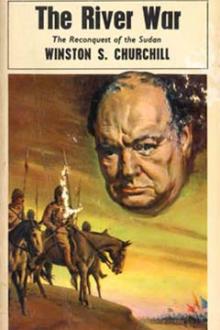
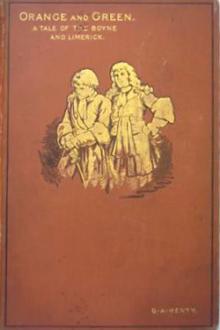
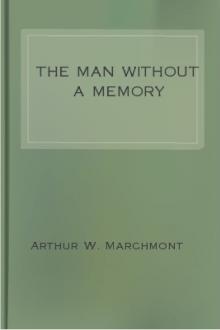
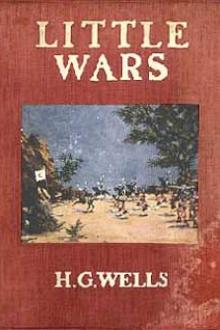
Comments (0)